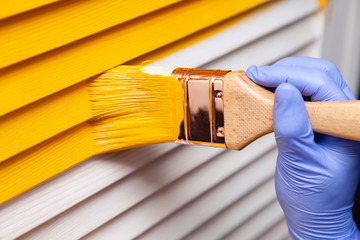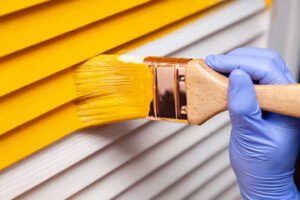 The best home insurance providers make understanding policy terminology and coverage options easy. They offer helpful resources online or via phone to help homeowners create inventories, estimate replacement costs, and understand local risks.
The best home insurance providers make understanding policy terminology and coverage options easy. They offer helpful resources online or via phone to help homeowners create inventories, estimate replacement costs, and understand local risks.
Your state and ZIP code determine rates, while your credit score and claims history also play a role. Other factors include the age of your home and whether it can be rebuilt using similar materials. Visit https://www.nicholsoninsurance.com to learn more.
Homeowners insurance offers protection against the costs of repairing and replacing your home and personal belongings if they are damaged or destroyed by covered perils. Most policies also include liability coverage for accidents that happen in your house or on your property. It’s important to understand the basics of homeowners insurance so you can make informed decisions about buying a policy and what types of additional coverages may be right for you.
The most basic homeowners policy, referred to as an HO-1 or “bare bones” policy, provides only dwelling coverage. This covers the structure of your home, garages and other attached structures, as well as built-in features like heating and cooling systems and appliances. However, this type of policy does not cover personal property or liability. Most insurers offer a more comprehensive home policy called an HO-3, which provides protection for the dwelling, personal property and liability. This is the most common type of policy purchased by homeowners.
Generally speaking, most standard home insurance policies have a set monetary coverage limit for each type of damage or loss. The amount is often referred to as the dwelling coverage limit and is listed on the declarations page of your policy along with other information such as the insurer’s name, your name and address, and the policy term. A separate document known as a policy jacket includes more detailed language, including policy exclusions and definitions.
Dwelling coverage typically pays to repair or rebuild your home if it is damaged by certain events, such as fire, wind or hail. However, certain catastrophes, like flooding or earthquakes, require specialized insurance and are not typically covered by a standard home policy.
Other types of coverages included in most home policies include loss of use, medical payments and personal property. Some policies allow you to select a specific percentage of your dwelling coverage limit to be applied toward repairing or replacing personal belongings. It is a good idea to take an inventory of your possessions so you can make sure everything you own is insured.
In addition to standard home insurance coverages, most companies offer a wide variety of add-on policies or endorsements that increase the monetary limits for particular items such as jewelry, extend liability coverage and protect against rising building costs in some situations. These options are usually sold for an additional premium.
Additional coverage
Homeowners insurance provides financial protection against damage to your house and personal possessions from unforeseen incidents. It also offers liability coverage in case someone is injured on the property and you are found to be at fault. The type of coverage you need depends on your unique situation, and several types of homeowners policies are available. Each of these policies covers different perils and has its own specific cost structure.
Home insurance policies generally cover the costs of repairing or rebuilding your house if it is damaged or destroyed by fire, wind, hurricanes, lightning, vandalism and other specified events. Most also cover detached structures such as a garage, tool shed or gazebo at up to 10 percent of the amount of insurance you have on your house. However, a standard policy won’t cover damage from earthquakes or floods, so you will need separate policies for these.
Other important aspects of a homeowners policy include personal property coverage and loss of use coverage. Personal property coverage pays to replace your belongings if they are stolen or damaged by covered events. This includes items like furniture, clothing, sports equipment and appliances. You can also elect to add an endorsement for valuables coverage, which extends the standard limits. Loss of use coverage pays for expenses such as hotel rooms and restaurant meals if you are forced to temporarily live elsewhere after a disaster your policy covers.
Additional coverage options include a guaranteed replacement cost policy, which gives you the highest level of protection possible. This policy will pay to rebuild your home if it is damaged or destroyed by a named event, even if the cost exceeds the policy limit. This policy will generally have higher premiums, but it may be worth the investment for many homeowners.
There are a number of other policy enhancements you can purchase to further enhance your protection. These can include medical payments to others, which pays for immediate medical treatment for guests on your property regardless of who is at fault, and ordinance or law coverage, which provides protection against rising construction costs due to a shortage of building materials following a disaster.
Deductibles
A home insurance deductible is the amount you agree to pay out of pocket before your insurer begins to pay on a claim. It’s usually a flat dollar amount, but it can also be a percentage of your policy’s coverage amount (typically for specific types of coverage such as flood and earthquake). The higher the deductible you choose, the lower your premium will be. However, it’s important to choose a deductible that you can afford to pay in the event of a claim.
It’s a good idea to get home insurance quotes with different deductible options, so you can find the “sweet spot” between lower premiums and a deductible you can afford to pay in the event of an insured loss. Additionally, be sure to factor in any special provisions or limitations that might be included with a particular deductible option. For example, a guaranteed replacement cost deductible might only cover the amount it would take to rebuild your home as it was before the loss, whereas a basic replacement policy might include construction costs that go above and beyond what it would cost to rebuild your home to current building codes.
Deductible rates vary between insurers, but they are often based on risk assessment factors including credit score, property location, coverage options and age of the home. Some states also regulate how much you can be charged for home insurance, which might affect your coverage levels and/or deductibles.
There are many different home insurance policies on the market, including the HO-3, a standard homeowners policy, the HO-8, designed for older homes and the HO-5, which is a condominium owners’ policy.
Other options available for home insurance might include a flood insurance policy, an endorsement to your homeowners policy that covers damage caused by animals or aircraft, or coverage for the increased cost of rebuilding due to a shortage of building materials following a disaster. These options can be an excellent addition to your home insurance, but they’ll typically require a separate policy and will have their own unique deductibles. If you are interested in these additional coverages, talk to a licensed insurance professional about your options and the best way to obtain them.
Exclusions
Many home insurance policies contain exclusions that cover a variety of circumstances and perils. Some are deemed to be too risky for an insurance company to take on. Some are based on common sense: for example, wood-framed buildings will cost more to insure than cement- or steel-framed structures. Insurance companies also exclude losses related to natural disasters that are unlikely enough to cause substantial damage but too large for any insurer to take on – such as floods or earthquakes.
Other reasons for insurance policy exclusions include the fact that some types of loss are a result of negligence or a homeowner’s failure to properly maintain his property. For example, many standard homeowners policies do not cover water damage caused by termite or rodent damage, rust, rot, mold and other problems that arise as a result of neglect and inaction. It is typically possible to purchase extra coverage for these issues, however.
Water damage from sewer or drain backups is not covered in a standard home insurance policy, either, even when it is the result of heavy rains, clogged gutters and downspouts, a sump pump failure or a root invasion in your yard. In order to have this type of coverage, it is usually necessary to purchase extra coverage that is often called water backup and overflow coverage.
Another category of excluded loss is that caused by the homeowner’s intentional actions or those of members of his household. For example, if someone deliberately sets the shed on fire, home insurance will not pay to replace it. Intentional damage is also not covered by general liability coverage, which is typically purchased separately as an endorsement to a homeowners policy.
Other exclusions are the result of the fact that certain causes of loss would require so much money that insurance companies simply could not afford to pay for them with premiums collected from all customers – for example, tsunamis, mudslides and war. It is generally possible to purchase an endorsement to insure these types of losses, but the costs can be quite high. For these reasons, it is important to understand the extent of a home insurance policy’s exclusions before making any decisions about purchasing or renewing a policy.



